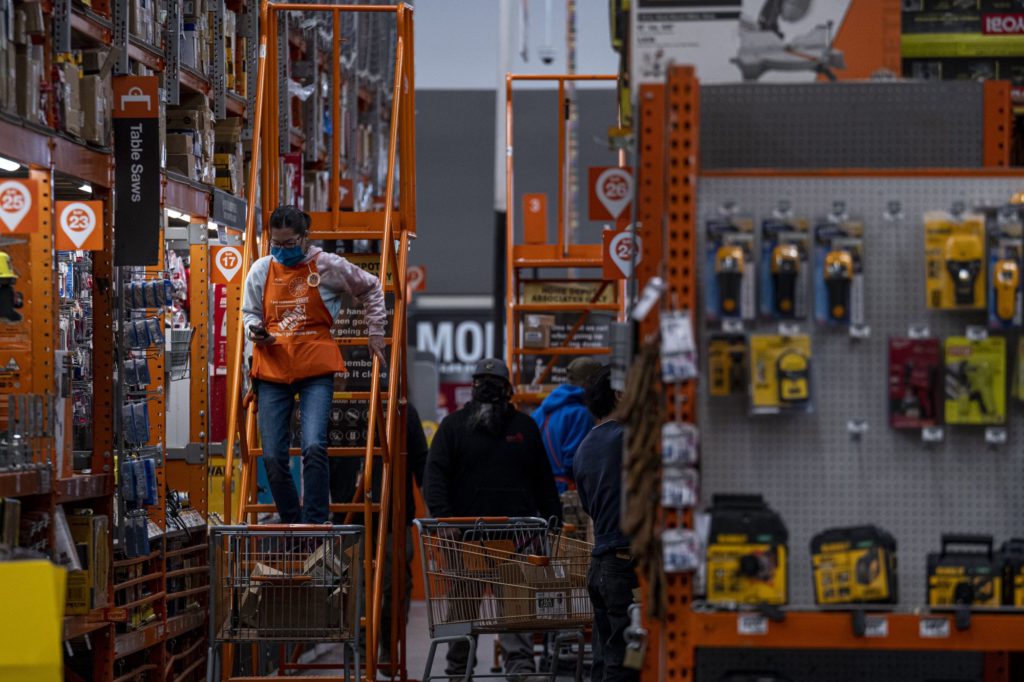(Bloomberg) — Home Depot Inc. fell the most in the Dow Jones Industrial Average after the retailer posted weaker-than-expected results in the second quarter, joining the trend of early pandemic winners coming back to Earth after outsize gains over the past year.
Same-store sales, a key metric in retail, rose 4.5% in the period ended Aug. 1, the Atlanta-based company said Tuesday in a statement. That missed the 5.6% average of analysts estimates.
The retailer’s historic revenue gains during the pandemic have been anchored by Americans fixing up their homes. Now, with the economy reopening, major renovations done by professionals are becoming a larger business. That led to an 11% gain in the average purchase price, but overall transactions fell 5.8%, not enough to sustain the momentum.
Home Depot shares fell 4.5% at 11:44 a.m. in New York after an earlier drop of 5.5%, the biggest intraday slide since Feb. 23. The stock headed for its eighth straight decline on the day of an earnings report.
Read More: Home Depot Punished Staff for BLM Activism, NLRB Alleges
It’s the second quarter since the start of the pandemic where spend from pro customers outpaced that from the do-it-yourself segment. Richard McPhail, Home Depot’s chief financial officer, said the shift is beneficial for the company.
“At the end of the day, it’s all home improvement demand,” he said in an interview. “It always winds up in the consumer’s home. It’s really just how the consumer is choosing to complete their projects.”
Professional contractors said their “backlogs have never been healthier, never been bigger,” McPhail said. The retailer is making adjustments in its stores, such as reconfiguring its plumbing and pipes department, as spend shifts to the professional consumers.
The waning effects of the pandemic in the U.S. have reversed the fortunes of many companies that saw demand surge during lockdowns, from household cleaner Clorox Co. to streaming-video giant Netflix Inc. Walmart Inc. reported same-store sales gains that topped analysts’ estimates Tuesday, but still faced questions over e-commerce demand and margins.
While many competitors have released a forecast, Home Depot again declined to do so, citing continued uncertainty from the pandemic. One possible reason for the uncertainty at retailers like Home Depot and Walmart Inc.: Investors are struggling to figure out what will happen once government stimulus wanes, according to Edward Jones analyst Brian Yarbrough.
The company is also grappling with the impact of inflation, as commodity and shipping costs rise and some of the effects are being passed along to consumers. McPhail said the supply chain team is managing through the increased pressure in transportation.
In addition, Home Depot may face increased competition from local businesses as consumer behavior shifts and DIY trends normalize, said Neil Saunders, managing director of GlobalData.
“It is so important for Home Depot to emphasize the convenience and speed of its online services,” Saunders wrote in a note. “It is going to have to work increasingly hard to secure that share from others.”
(Updates with CFO comments beginning in fifth paragraph.)
More stories like this are available on bloomberg.com
©2021 Bloomberg L.P.











